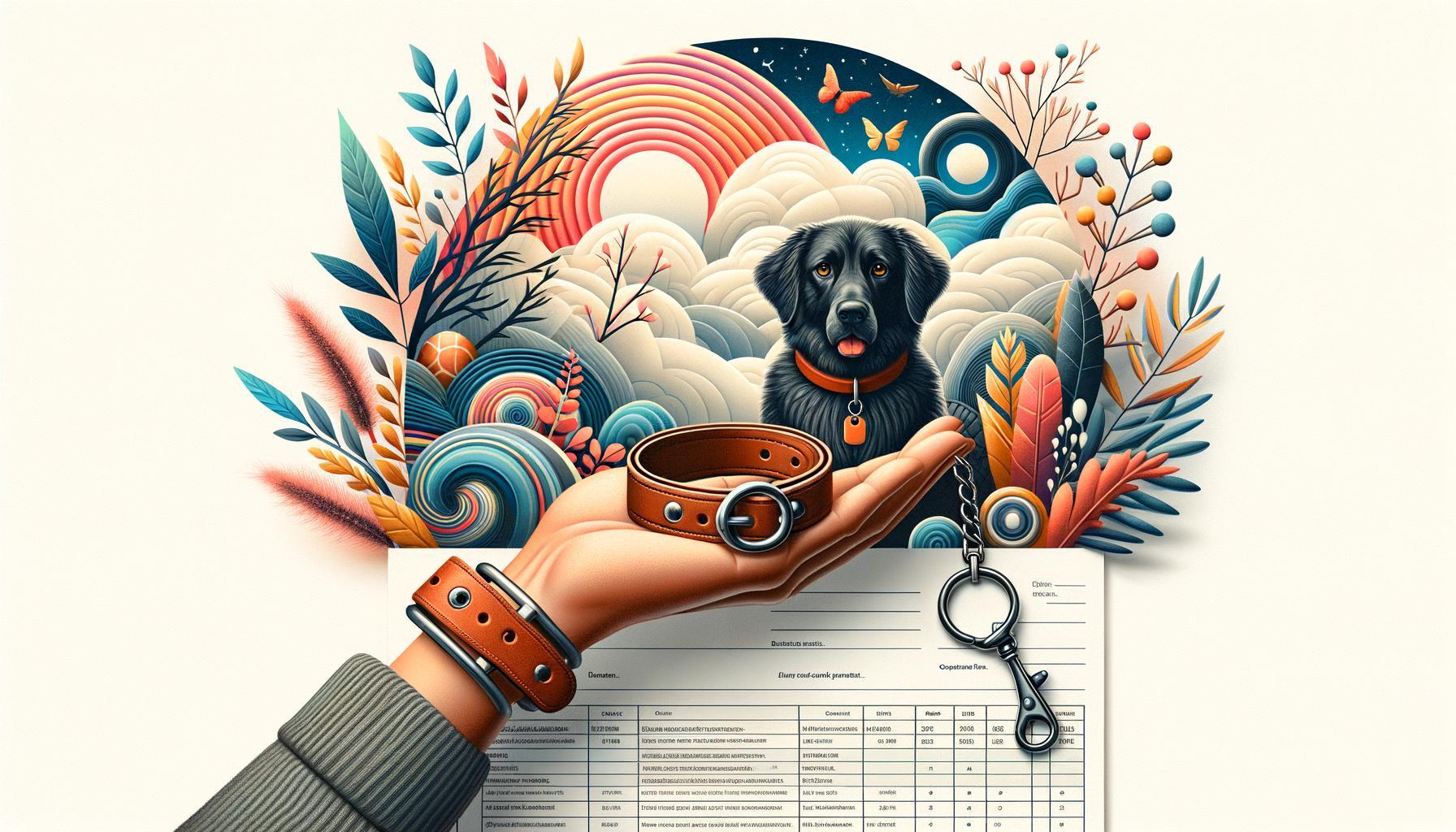In the quiet whisper of a night disturbed by unwelcome memories, a pair of gentle eyes glows with unwavering patience. These eyes belong to an extraordinary companion, often unrecognized as a healer in their own right. Welcome to the world of PTSD support animals—furry guardians whose silent presence offers solace, grounding, and an unspoken promise of understanding. Far beyond mere pets, these empathetic creatures forge a bridge between their human counterparts and a semblance of safety, illuminating a path through the shadowy realm of trauma. Join us as we explore the profound and often miraculous bonds formed between those who suffer and the animals who aid in their recovery, shedding light on an uncharted avenue of emotional healing.
Table of Contents
- Understanding PTSD: Beyond the Stereotypes
- The Science Behind the Cure: Animals in PTSD Treatment
- Stories of Hope: Real-Life Heroes on Four Paws
- Tailoring the Bond: Choosing the Right Support Animal
- Training for Triumph: Ensuring Success for Human and Animal Alike
- Policy and Progress: Advocating for Wider Recognition
- Closing Remarks
Understanding PTSD: Beyond the Stereotypes
When it comes to understanding post-traumatic stress disorder (PTSD), there’s a pressing need to move beyond the stereotypical portrayals often seen in media. Individuals with PTSD face a complex and multifaceted condition, and one of the most progressive and effective methods of support comes in the form of service animals. These furry guardians play an invaluable role in the healing process, providing not just companionship but also crucial mental health support. Unlike traditional pets, these animals are trained to perform tasks that mitigate the symptoms of PTSD, including grounding techniques during panic attacks, interrupting flashbacks, and providing a constant, comforting presence. Their role is deeply personal and varies based on the needs of the individual, underscoring the dynamic relationship between human and animal.
Consider the diverse ways in which support animals contribute to the wellbeing of those with PTSD:
- Emotional Support: Reduces feelings of isolation and anxiety.
- Physical Safety: Alerts owner to signs of distress and guides them to safe environments.
- Medical Assistance: Retrieves medication and can alert others during medical emergencies.
For a more detailed look, here’s how different service animals can assist their human companions:
| Animal | Specialized Task |
|---|---|
| Dogs | Providing tactile stimulation to calm anxiety attacks. |
| Miniature Horses | Guiding individuals with mobility impairments. |
| Birds | Offering focus and distraction techniques during flashbacks. |
These animals aren’t just pets; they are integral to the therapeutic process, offering tailored support that addresses the unique challenges faced by individuals with PTSD. By recognizing and appreciating the pivotal role these creatures play, we gain a richer, more nuanced understanding of the resilience and strength inherent in the journey of managing PTSD.
The Science Behind the Cure: Animals in PTSD Treatment
The impact of support animals for individuals with PTSD is rooted in both physiology and psychology. When a person interacts with an animal, there is a release of **oxytocin**, a hormone known to induce feelings of relaxation and trust. This, in turn, can reduce the **levels of cortisol**, the stress hormone known for triggering the ‘fight or flight’ response. These hormonal changes help mitigate the anxiety and hyperarousal associated with PTSD. Furthermore, animals provide a non-judgemental and consistent source of comfort which can be incredibly grounding for someone experiencing the intrusive thoughts typical of PTSD.
Studies have shown that the benefits of integrating pets into PTSD treatment are multifaceted:
- **Emotional Regulation:** Animals help stabilize the mood swings commonly seen in PTSD patients.
- **Social Interaction:** Interacting with pets can improve social skills and encourage external social interactions.
- **Physical Activity:** Regular walks and play sessions with pets foster physical activity, which serves as a positive outlet for stress.
| Benefit | Impact on PTSD |
|---|---|
| Reduced Anxiety | Lower cortisol levels |
| Emotional Support | Increased oxytocin |
| Improved Social Skills | Enhanced social interactions |
Stories of Hope: Real-Life Heroes on Four Paws
Behind every wagging tail and curious nose lies a silent hero that offers solace and strength to those grappling with the turbulent waves of PTSD. These furry guardians possess an uncanny ability to sense distress, providing a steadying presence in moments of anxiety. Imagine a veteran, struggling with sleepless nights, finding comfort in the rhythmic heartbeat of their loyal Labrador, or a trauma survivor who, feeling overwhelmed, feels a steady paw on their lap, reassuring them that they’re not alone. These animals turn ordinary actions into extraordinary acts of support. They **help interrupt panic attacks**, **reduce hypervigilance**, and even **ground individuals during flashbacks**. Their therapeutic impact is summed up in the way they transform despair into hope, one gentle nuzzle at a time.
Beyond their emotional support, PTSD support animals engage in tailored tasks that have profound impacts on daily life. A Support Animal’s duties may include:
- Acting as a buffer in crowded places
- Waking their owner during nightmares
- Reminding their owner to take medication
- Creating personal space in public areas
- Providing deep pressure therapy by lying on their owner
The bond formed between a handler and their support animal is an exceptional partnership where furry companions become steadfast sentinels, continuously attuned to the ebb and flow of human emotions. This bond is not merely about companionship; it’s a lifeline woven from trust, affection, and unwavering loyalty.
| Task | Impact |
|---|---|
| Interrupting Panic Attacks | Reduces Anxiety Levels |
| Buffer in Crowded Places | Prevents Overstimulation |
Tailoring the Bond: Choosing the Right Support Animal
Finding the perfect companion to help manage PTSD symptoms involves more than just picking out a pet. **Considering the unique needs** of the individual is paramount. Both the temperament of the animal and the specific tasks they will perform must align harmoniously. For instance, if comfort and consistent presence are required, a mellow, **low-energy breed** like a Newfoundland or a Bernese Mountain Dog may be ideal. On the other hand, higher-energy breeds like Labradors or Golden Retrievers can be excellent for those who need frequent reminders to take medication or help in navigating crowded places.
Just as important is the synergy between the handler and the animal. **Several factors** come into play when ensuring a suitable fit:
- **Lifestyle compatibility:** Urban vs. rural living, availability of open spaces.
- **Allergy considerations:** Hypoallergenic breeds or species.
- **Task specificity:** Does the animal need to perform physical tasks or provide emotional stability?
- **Training capability:** Some breeds are easier to train for complex tasks.
Below is a simple comparison of a few popular support animals:
| Animal | Key Traits |
|---|---|
| Dogs | Versatile, trainable, emotionally responsive |
| Cats | Calming presence, independent, low maintenance |
| Rabbits | Gentle, hypoallergenic, small-space friendly |
Training for Triumph: Ensuring Success for Human and Animal Alike
When training PTSD support animals, the focus stretches far beyond basic obedience. These animals must master a comprehensive set of skills tailored to the unique needs of their human companions. Their training includes:
- Responsive alertness: Recognizing the signs of anxiety attacks and providing immediate comfort.
- Environmental scans: Ensuring their handlers feel safe by ‘clearing’ rooms or ensuring surroundings are secure.
- Grounding techniques: Using touch or pressure to help mitigate escalating stress levels.
A structured training regimen is crucial in preparing these loyal guardians for their roles. Both human and animal undergo persistent and hands-on training sessions which typically encompass:
| Session Focus | Duration | Outcome |
|---|---|---|
| Basic Commands | 3-4 weeks | Reliable obedience |
| Custom Tasks | 6-8 weeks | Specialized support |
| Integration with Handler | Ongoing | Seamless teamwork |
Policy and Progress: Advocating for Wider Recognition
In recent years, advocacy groups have worked tirelessly to push for the **wider recognition of PTSD support animals** and their critical roles in mental health rehabilitation. These furry guardians provide unparalleled emotional support to individuals navigating the difficult terrain of post-traumatic stress disorder. Despite their proven benefits, legislation surrounding their status and rights remains inconsistent across different regions. This lack of uniformity often results in confusion and hardships for both the handlers and their animals.
To address these challenges, multiple organizations are campaigning for a cohesive policy framework that includes:
- **Standardized training for PTSD support animals** to ensure uniform quality and reliability.
- **Nationwide recognition** giving these animals legal access to public spaces and housing without discrimination.
- **Educational programs** aimed at the general public, to raise awareness about the role and necessity of support animals.
To illustrate the variation in policy across regions, consider the following table:
| Region | Policy |
|---|---|
| Region A | Allows access to all public spaces |
| Region B | Restricted access only to specific areas |
| Region C | Recognition but no legal access guaranteed |
Closing Remarks
In the tapestry of modern life, where the threads of stress and trauma often weave intricate and burdensome patterns, the emergence of PTSD support animals stands as a testament to the profound bonds we share with the animal kingdom. These furry guardians, with their unspoken wisdom and unconditional loyalty, bring not just companionship, but a sanctuary of healing for those navigating the stormy seas of PTSD.
As we reflect on the stories woven through the journey of these extraordinary creatures and their human counterparts, one truth remains clear: hope can wear fur, and healing sometimes has paws. Whether it’s the gentle nudge of a dog during a moment of anxiety or the calming purr of a cat in the midst of a sleepless night, these animals illuminate the path to recovery with their presence.
So, as we close this chapter on the healing role of PTSD support animals, let us carry forward a deeper understanding and a renewed appreciation for the silent, steadfast heroes who walk alongside us, paw in hand, through the valleys of the human experience. They remind us, in their quiet way, that healing is a journey best taken with a loyal companion by our side.







Leave a Reply